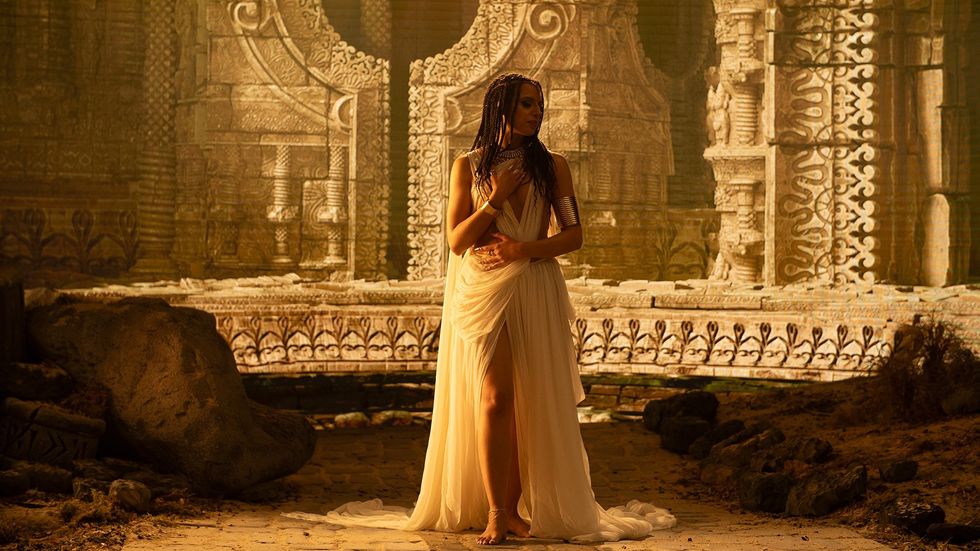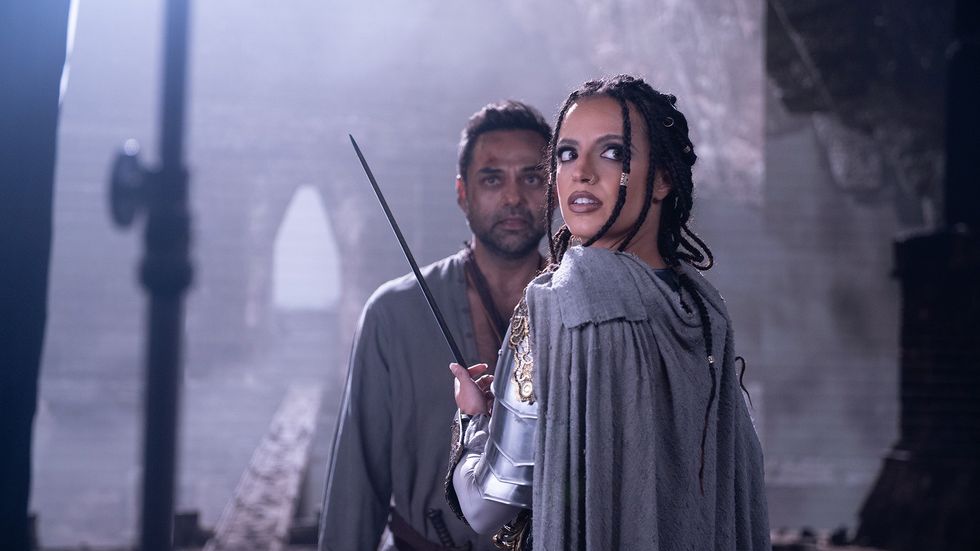
Following the success of volume and LED wall projects like The Mandalorian and Netflix’s 1899, it seems the technology is here to stay. Touted as a replacement for green screen, the tech hasn’t replaced the tried and true method yet, but it has given creatives a more efficient way of utilizing VFX in their projects.
Impossible Objects joined up-and-coming musical artist PIA and EDM music producer Anymize, to create a fantasy epic for the music video music video Follow the Toad. For this project, a 30×12 foot LED wall was used in combination with Unreal Engine.
Here’s how they did it and what we can learn from their process.
PIA & Anymize – ‘Follow The Toad’
Starring Indian actor Abhay Deol, the entire music video was captured in a single day on a small stage outfitted with the aforementioned 30′ x 12′ LED wall, which is small when compared to television productions.
Co-founder of Impossible Objects Joe Sill directed and also built all the environments entirely in the Unreal Engine using assets from Epic’s Quixel Megascans (a favorite of mine) and Big/Medium/Small.

However, what really piqued my interest was the team’s use of the iPhone app RealityCapture from Epic Games.
Sill and his team used it to scan both actors and create digital doubles of them, which were then used in all of the wide shots.
What Creatives Can Learn

Once upon a time, VFX assets would cost you an arm and a leg, at least in time and talent spent creating them or hiring a team who had assets on hand. But technology and accessibility have made incredible leaps in the past few years, giving creatives everything they need to world-build on their own.
If we look at the Follow the Toad music video, the most budget-intensive part seems to be the crew and LED wall. Flashback even half a decade and your assets and VFX work would have eaten up more of your budget.
The biggest takeaway I have from this project is how much easier it is to dive into a VFX-heavy production. While it might seem daunting to work with an LED wall, the fundamental concepts are scalable to smaller budgets—even ones smaller than this music video.

Quixel Megascans are incredibly affordable, especially if you’re working with Unreal Engine (which is also free to use). While assets from Big/Medium/Small can get pricey, they are assets you can always reuse on later projects, making it a sound investment if you regularly do this kind of work.
The tools are available and affordable, that is clear. What will truly set creatives apart in the future is how much time and effort one will spend learning how to use these tools effectively.
It seems that the days of focusing on one area are fading into history, and creatives may need to become multi-hyphenates in order to find success. I guess that’s the drawback of democratizing the tools. The more people that have access to them, the harder everyone has to work to stand out.
A Green Screen Killer?

But let’s talk about how LED walls have affected green screens.
In short, they really haven’t.
The volume is a unique tool that has given creatives a new way of creating VFX worlds. It’s made things more efficient and given actors something tangible to react with, but the workflow has moved the post-production effort all the way into pre-production.
It’s a tool that has created its own workflow niche. And it also has its limitations.
In the Follow the Toad music video, it’s evident what limitations the small LED wall creates for the actors and camera team. Shots are tight on the talent, and any camera movement has to fit a pre-defined space. Sure, you can shoot wider and extend the set beyond the LED wall in post, but that kind of defeats the purpose of having an LED wall altogether.
While you can utilize this new process in lieu of a green screen, there will always be moments when a piece of green fabric will work a whole lot better. Either for your budget or your workflow.
It’s not that one tool has replaced another; we just have another trick in our bag to produce better work. But shooting on an LED wall is getting cheaper, so maybe that will change in the future. Till then, it’s important to learn when to utilize one over the other.
Author: Yaroslav Altunin
This article comes from No Film School and can be read on the original site.
